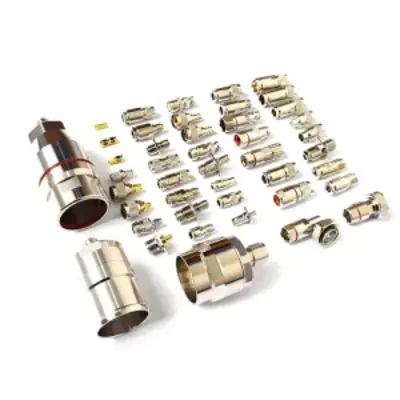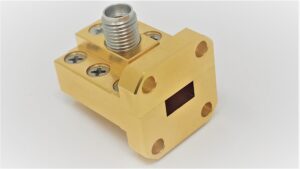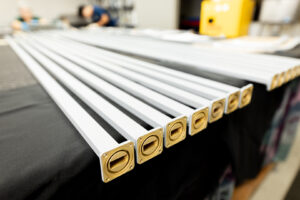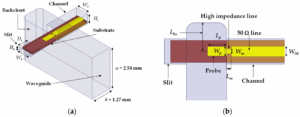A rotary coupling allows fluid transfer between stationary and rotating parts, handling pressures up to 5000 PSI and speeds up to 300 RPM, ensuring seamless hydraulic system performance.
Table of Contents
Hydraulic System Components
Hydraulic systems are ubiquitous in our daily lives, from car braking systems to large construction machinery. A typical hydraulic system includes a reservoir, pump, valves, and actuators. These components work together to ensure the efficient operation of the hydraulic system.
An excavator’s reservoir typically has a capacity of 50 to 100 liters, ensuring an adequate supply of hydraulic oil. The pump is responsible for pressurizing the hydraulic oil; common hydraulic pumps can generate pressures up to 3000 PSI, driving various mechanical equipment.
Valves play a crucial role in a hydraulic system, controlling the flow and direction of hydraulic oil. Pressure control valves, such as relief valves, are set at 3000 PSI to prevent system overload and protect equipment safety. Directional control valves determine the flow path of the hydraulic oil.
Hydraulic cylinders and hydraulic motors are the most common types of actuators. Hydraulic cylinders are usually used for linear motion, such as lifting heavy objects in construction machinery. A hydraulic cylinder with a diameter of 10 cm and a stroke length of 1 meter can generate several tons of thrust.
Hydraulic oil is the “lifeblood” of the system, requiring high lubricity and low compressibility. In aviation, aircraft like the Boeing 737 use specialized aviation hydraulic oil to ensure stable operation in extreme temperatures ranging from -40°C to 120°C.
The efficiency and reliability of hydraulic systems make them the preferred choice in many industries. From factory production lines to heavy equipment on construction sites, hydraulic technology is widely applied. Understanding the components and working principles of hydraulic systems not only helps with daily maintenance but also improves operational efficiency. As industry experts say, “Mastering the essence of hydraulic technology is mastering the core of mechanical control.”
Functions of Rotary Couplings in Hydraulic Systems
Rotary couplings play a crucial role in hydraulic systems, especially in applications requiring continuous rotary motion. They allow hydraulic oil to flow freely between stationary pipelines and rotating mechanical parts, ensuring system continuity and efficiency.
A typical rotary coupling can handle pressures up to 5000 PSI, making it suitable for high-pressure hydraulic systems. The materials of rotary couplings usually include stainless steel and brass, which are not only corrosion-resistant but can also withstand extreme working environments.
In agricultural machinery like combine harvesters, rotary couplings allow the hydraulic system to continue working while the machine is moving. Combine harvesters’ rotary couplings need to handle a hydraulic oil flow rate of 1000 liters per minute to ensure efficient operation during harvest season. This design greatly improves agricultural productivity. As an agricultural expert said, “Rotary couplings are key components of modern agricultural machinery, enhancing agricultural productivity.”
In the field of industrial automation, rotary couplings are commonly used in robotic arms, allowing hydraulic oil to pass through multiple rotating shafts. This design enables robots to flexibly perform complex tasks.
Rotary couplings in hydraulic systems are also commonly used in construction equipment such as excavators and cranes. These devices need to maintain the stability and continuity of the hydraulic system during rotation. A high-quality rotary coupling can have a service life of 10 years, reducing maintenance costs and downtime.
Another important application of rotary couplings is in hydraulic turntables used in large drilling equipment. These turntables need to rotate continuously during drilling while maintaining the stable operation of the high-pressure hydraulic system. A typical hydraulic turntable rotary coupling can withstand speeds of 300 RPM and pressures of 4000 PSI, providing stable power support for drilling operations.

How to Install Rotary Couplings to Ensure Hydraulic System Stability
Installing rotary couplings is a crucial step in ensuring the stable operation of hydraulic systems. Choosing the right model of rotary coupling is the first task. For example, a common model can withstand pressures up to 5000 PSI and speeds of 300 RPM. After determining the specifications, the next step is installation.
During installation, it is first necessary to ensure that all connecting parts are clean and free of oil. Any impurities can affect the sealing and lifespan of the rotary coupling. In the field of industrial automation, rotary couplings on robotic arms must be installed in a dust-free environment to ensure smooth operation for 200 precision operations per hour.
Next, correctly connect the rotary coupling to the hydraulic pipeline system. During connection, a specified torque wrench is required to avoid overtightening or loosening. In agricultural machinery maintenance manuals, it is usually recommended to use 50 Nm of torque for tightening. Overtightening may damage the seals of the rotary coupling, leading to hydraulic oil leakage and affecting the normal operation of the equipment.
During installation, it is also necessary to ensure that the axis of the rotary coupling is perfectly aligned with the axis of the rotating equipment. Misalignment can cause rapid wear of the rotary coupling, even damaging the entire hydraulic system.
After installation, a pressure test must be conducted to ensure that the system is leak-free and can operate normally at working pressure. Pressure testing typically requires 1.5 times the rated system pressure; if the system’s working pressure is 3000 PSI, the test pressure should reach 4500 PSI. Pressure testing is a crucial step in verifying installation quality. If leakage is found, adjustments and repairs should be made immediately.
Regular inspection and maintenance are also crucial. Every 500 hours of operation, it is recommended to check the wear and sealing performance of the rotary coupling. On offshore drilling platforms, the maintenance cycle of rotary couplings may be shorter due to the accelerated corrosion of metal parts in a saltwater environment.
Properly installing rotary couplings not only ensures the stable operation of hydraulic systems but also improves overall equipment efficiency and lifespan. As a hydraulic engineer said, “Details determine success or failure. Proper installation and maintenance of rotary couplings are key to ensuring the long-term reliability of hydraulic systems.”
Common Hydraulic Rotary Coupling Failures and Troubleshooting Methods
Hydraulic rotary couplings are critical components in hydraulic systems, but various failures may occur during long-term use. Understanding these failures and troubleshooting methods is crucial to maintaining efficient system operation.
Hydraulic oil leakage is one of the most common failures, usually caused by worn or damaged seals. An industrial robot operating for 500 hours may begin to have aging seals, leading to hydraulic oil leakage. The solution is to regularly inspect and replace seals, usually every 1000 hours, to effectively avoid leakage issues.
Rotary coupling jamming is also a common problem, especially when working in high-temperature environments. High temperatures cause internal parts to expand, leading to jamming. In the high-temperature environment of a steel mill, rotary couplings need to withstand temperatures up to 200°C.
Hydraulic oil contamination is another major cause of failures. Impurities entering the hydraulic system accelerate the wear of rotary couplings, affecting their lifespan. On a typical construction site, dirt and sand easily enter the hydraulic system, accelerating the wear of rotary couplings.
Excessive wear of rotary couplings is usually caused by poor alignment or improper operation. Misalignment causes uneven stress on the rotary coupling, accelerating wear. When installing a rotary coupling, it is essential to ensure perfect alignment with the equipment axis.
High pressure can also lead to rotary coupling failures. In hydraulic systems, excessive pressure places an excessive load on the seals and internal components of the rotary coupling, eventually leading to damage. The solution is to install pressure relief valves to ensure that system pressure remains within a safe range. In a high-pressure hydraulic system, pressure relief valves are usually set to limit pressure within 4000 PSI to protect rotary couplings and other components.
As industry experts say, “The stability of hydraulic systems depends on meticulous control of every detail, from the installation of rotary couplings to regular maintenance. Every step cannot be ignored.” Regular inspection and maintenance can effectively avoid the above common failures, extend the service life of rotary couplings, and ensure the efficient operation of hydraulic systems.







